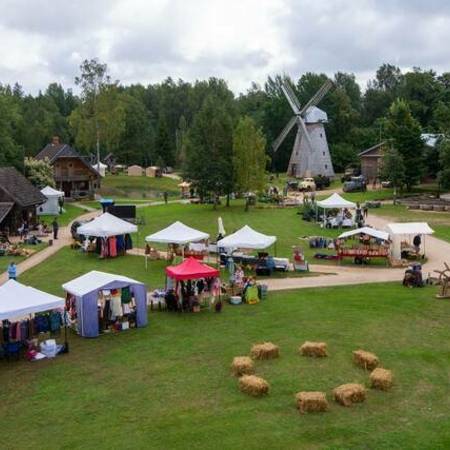“Ausekļu dzirnavas” is designed like a Latvian farm, where you can familiarise yourself with the collection of ancient tools and equipment, the household of your ancestors, and relax with your family. A place with a long history, where in 1896 the Ausekļu water mill was started for the first time on the River Iecava, which operated until 1950. The farm has been awarded the culture mark “Latvian Heritage” for maintaining Latvian traditions in a modern tourism offer. Every spring and autumn, the museum traditionally hosts the Sowing and Reaping Festival with demonstrations of ancient farm work and crafts, in which visitors are also involved. The main working tools of farmers – ploughs, harrows and all horse harness accessories are arranged in one place, but the tools of the Latvian woman are kept in the so-called grandmother’s room. There is also a blacksmith’s forge – a self-built workplace with an anvil, bellows, a shed – with threshing machines and other tools. The water mill building has regained its stately appearance and is included in the overall ensemble of buildings. The “Lazdu” windmill (Anno 1926), which was transferred from Īslīce Parish to Ādžūnri, 57 has also been restored. In ancient Semigallia, the mill as a building for grinding grain is already mentioned in the sources of the 13th century referring to Tērvete Hillfort, where, as it is described in the Chronicle of Rhymes, the mill was located at the foot of the hillfort, near the River Tērvete.
.jpg)
+2




Reviews